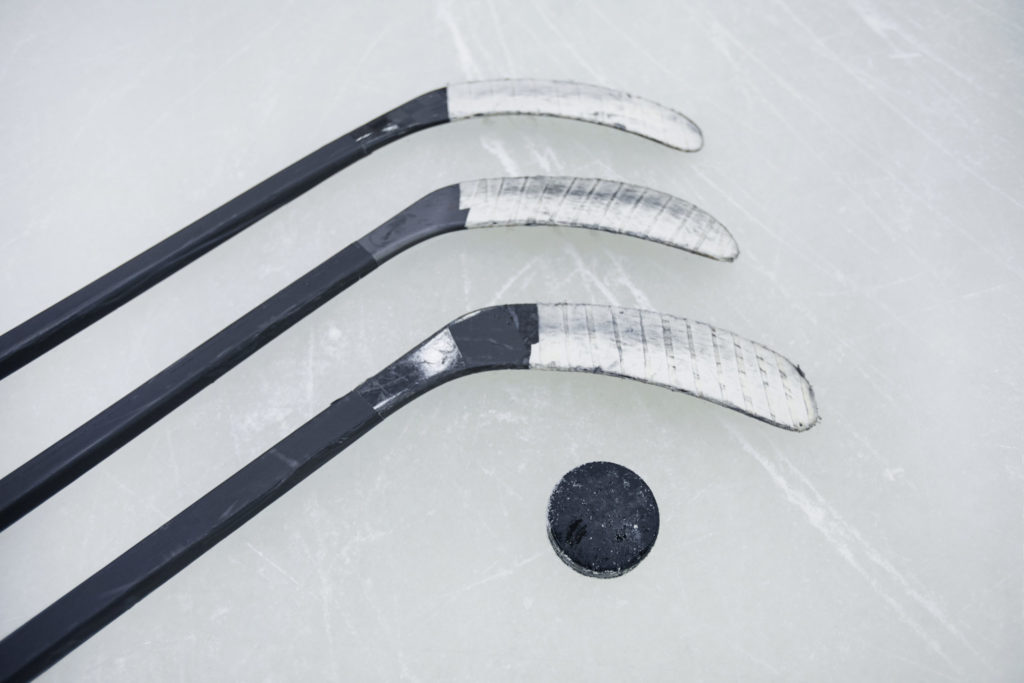Choosing the right hockey stick can be a difficult task with all of the different materials, sizes, and shapes. But don’t worry, we are here to help you make the best decision for your game. Keep reading to learn more about how to choose the right hockey stick, and soon you’ll be the next Jacob Panetta from The Icemen.
Choose a hockey stick with the right curve.
When choosing a hockey stick, it is important to select the one that has the right curve for your playing style. A player’s height and weight can also help determine what type of curve is best suited for them. For example, a player who is taller and heavier may prefer a longer and wider stick with a bigger curve, while a player who is shorter and lighter may prefer a shorter and narrower stick with less of a curve. It is also important to consider how you usually play the game. If you are more of an offensive-minded player, you may want to choose a stick with more of a curved blade so you can make quick shots on goal. If you are more of a defensive-minded player, you may want to choose a stick with less of a curve so you can better control the puck and make more accurate passes.
Choose a hockey stick made out of the right material.
There are a few things you need to take into account when choosing a hockey stick. The first thing to consider is the material the stick is made out of. There are three main types of materials sticks can be made out of wood, carbon fiber, and aluminum.
Wood sticks are the cheapest option, but they are also the heaviest and least durable. Carbon fiber sticks are more expensive than wood, but they are much lighter and more durable. Aluminum sticks are the most expensive option, but they are also the lightest and most durable.
The next thing to consider is your playing style. If you play aggressively and hit a lot of shots, you’ll need a stick that can withstand a lot of impact. Carbon fiber or aluminum stick would be a better choice than a wood stick in this case. If you play more passively and don’t hit many shots, a wood stick would be fine.
Finally, think about what size stick works best for you. There is no one-size-fits-all answer to this question; it depends on your height and build. Ask someone at your local hockey store for help finding the right size for you.
Choose a hockey stick that fits your hand size.
There are a few things you need to take into account when choosing a hockey stick. The first is the size of your hand. You want to choose a hockey stick that fits your hand size. If the hockey stick is too big or too small, it will be difficult to control and you won’t be able to use all of the features of the stick.
The next thing you need to consider is the type of player you are. There are different types of hockey sticks for different types of players. For example, there are sticks for forwards, sticks for defensemen, and goalie sticks.
Finally, you need to think about what kind of shot you want to take. There are different kinds of shots and each type of hockey stick is designed for a certain type of shot. For example, there are slap shots, wrist shots, and backhand shots. You want to choose a hockey stick that will help you take the type of shot that you want to take.
Choose a hockey stick with the correct blade technology.
There are many different technologies when it comes to hockey sticks. Some blades are designed for slap shots, while others are meant for quick wrist shots. There are also sticks designed for beginners and those designed for professional players. When choosing a hockey stick, it is important to know the different technologies and what each one does.
One of the most important technologies is the blade curve. This is the shape of the blade and can affect how well a player can shoot or pass the puck. The curve on a blade can be either positive or negative. A positive curve means that the end of the blade is curved up, while a negative curve means that the end of the blade is curved down. Blades with a positive curve are better for taking powerful slap shots, while blades with a negative curve are better for quick wrist shots and passing.
Another important technology when choosing a hockey stick is its flex rating. Flex ratings measure how much force is needed to bend or flex a stick. The higher the flex rating, the more force is needed to bend it. Sticks with high flex ratings are good for hitting or shooting hard pucks, while sticks with low flex ratings are good for control and accuracy.
It is also important to consider weight when choosing a hockey stick. Heavier sticks tend to be more durable but can be harder to control than lighter sticks. It is important to find a balance between durability and control that works best for you personally.
